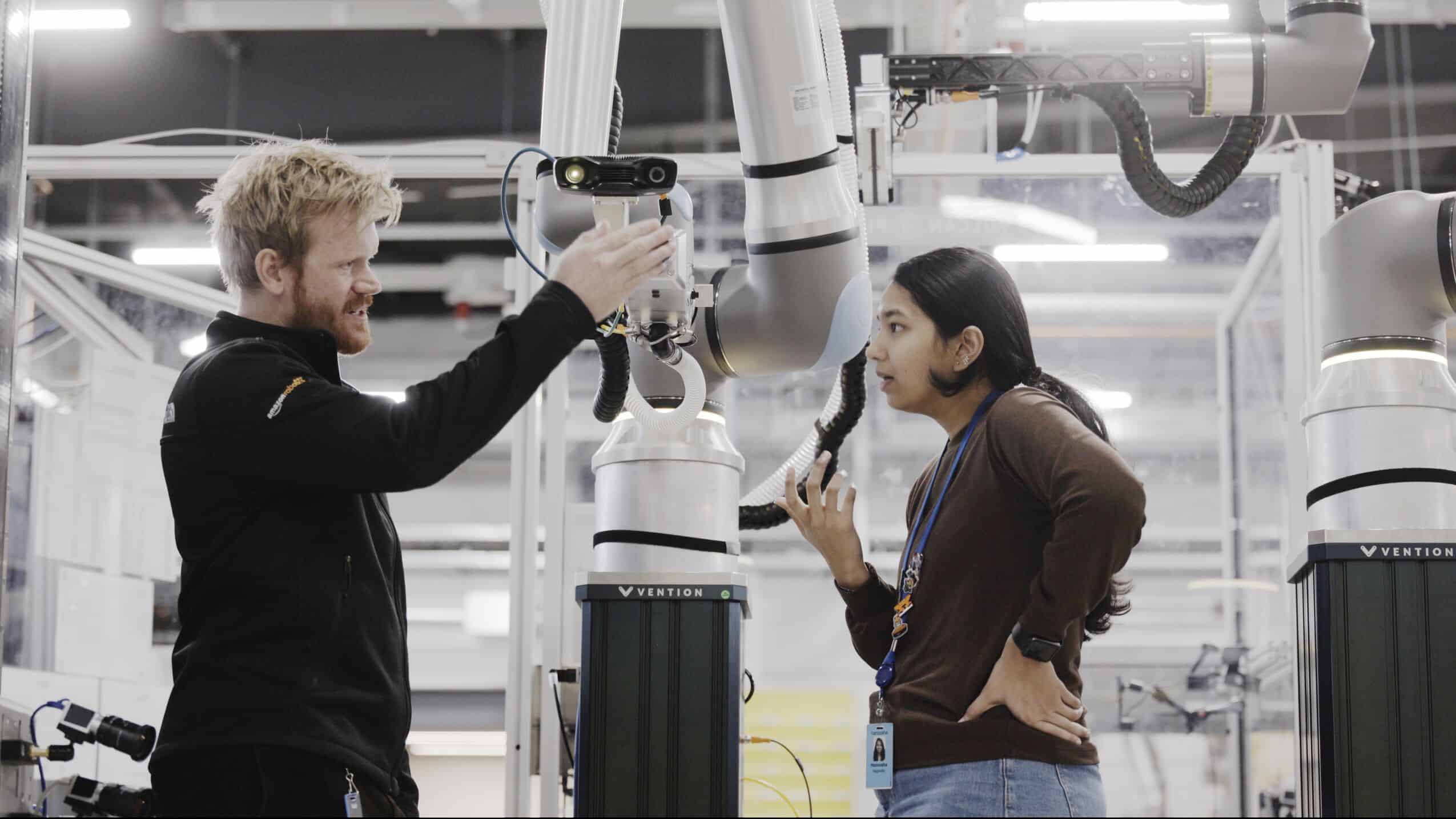Amazon Introduces ‘Vulcan’: A Revolutionary Warehouse Robot
Amazon has officially unveiled ‘Vulcan,’ a next-generation warehouse robot that represents a significant leap in warehouse automation technology. Unlike conventional robots that rely primarily on vision systems and rigid movements, Vulcan integrates advanced tactile sensors and AI-driven feedback mechanisms, allowing it to interact with objects in a manner similar to a human hand.
A Breakthrough in Robotic Dexterity
At the core of Vulcan’s capabilities is a sophisticated network of force-feedback sensors embedded in its grippers, combined with a suction arm and AI-guided cameras. These sensors enable Vulcan to detect not only contact but also pressure, slippage, texture, and object contours in real-time. This advanced sensing capability allows the robot to instantly adapt its grip, making it capable of handling a broader range of inventory, including fragile, oddly shaped, or densely packed items that were previously challenging for automation.
Key Features of Vulcan’s Sensing Technology:
- Pressure Detection: Prevents crushing or dropping items by applying the optimal amount of force.
- Texture Recognition: Assesses grip security based on surface friction, enhancing handling of various materials.
- Slippage Feedback: Adjusts grasp mid-motion if an item begins to shift, ensuring secure handling.
- Shape Sensing: Determines ideal angles for picking and placing items in storage pods, optimizing storage efficiency.
Deployment and Impact
Vulcan is already operational at select Amazon fulfillment centers, including locations in Spokane, Washington, and Hamburg, Germany. To date, it has processed over half a million customer orders, primarily managing items located in ergonomically challenging positions, such as the highest or lowest levels of storage racks. This deployment has resulted in significant efficiency gains, improved safety, and reduced damage to items.
Benefits of Vulcan’s Deployment:
- Efficiency Gains: Continuous operation and faster task completion compared to manual workflows.
- Safety Improvements: Reduced physical strain on warehouse employees by automating high-risk movements.
- Damage Reduction: Precision grip lowers the rate of item mishandling or breakage.
- Learning Over Time: Machine learning models update based on tactile feedback and performance data, refining motion planning and grip techniques.
The Future of Warehouse Automation
Amazon plans to expand Vulcan’s deployment in the coming months, leveraging data from current operations to enhance system intelligence and streamline rollout. As Vulcan continues to improve, it is expected to handle nearly all SKUs in Amazon’s inventory, particularly those with irregular dimensions, sensitive packaging, or flexible materials. This advancement has the potential to reduce warehouse complexity, accelerate fulfillment times, and establish Amazon’s logistics network as a model for future automation.

The introduction of Vulcan represents more than just a new warehouse tool; it lays the foundation for a new kind of human-robot partnership that could define the next generation of industrial work. By integrating tactile sensing into robotic automation, Amazon is not only enhancing its own operations but also potentially transforming industries beyond e-commerce, including manufacturing, pharmaceuticals, and eldercare.
As Amazon continues to innovate in warehouse automation, the deployment of robots like Vulcan will likely play a crucial role in shaping the future of logistics and industrial robotics.


